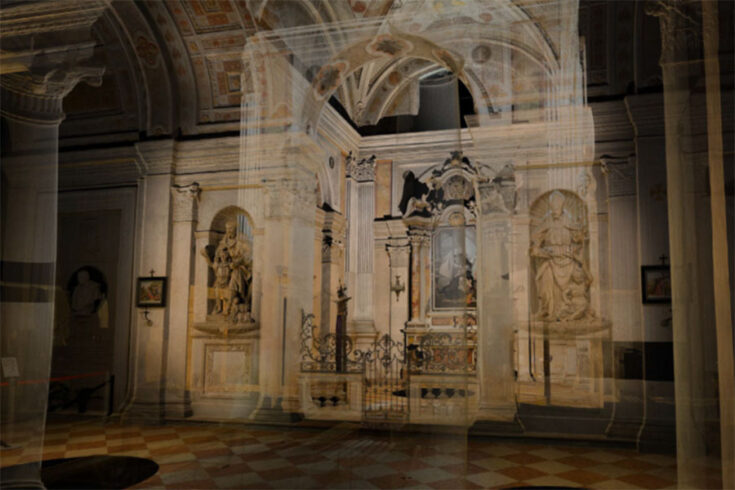National Gallery visitors will travel in time and space, thanks to a virtual reality experience.
The virtual reality (VR) experience brings a 16th century painting back to the Italian chapel for which it was created.
Using VR headsets, visitors will see Veronese’s painting ‘The Consecration of Saint Nicholas’ as it would have been seen in its original church setting. The altarpiece of the church of San Benedetto al Po, near Mantua, in 1562.
In addition to the painting, they’ll explore the beautiful frescoes and architecture that once surrounded it.
Cutting-edge innovations
Virtual Veronese was commissioned under the gallery’s partnership with StoryFutures, part of the Creative Industries Clusters programme. This is funded by UK Research and Innovation (UKRI) and delivered by the Arts and Humanities Research Council.
It’s just one of the cutting-edge innovations funded by the programme, which covers the whole of the creative sector.
Virtual Veronese surrounds the viewer in an accurate scanned 3D model of the chapel and tells its story using volumetric video actors.
New ways of story telling
The project is a result of the gallery’s plan to share research with a wider audience by using immersive technologies to explore new ways of story telling. The immersive experience was developed and produced by Focal Point VR.
The digital experience is accompanied by a recording of Gregorian chant, performed by Veneti Cantores.
The piece of music is taken from a choral book that was produced at San Benedetto al Po in the 1560s, so it’s contemporary with Veronese’s altarpiece. The music that you hear is the same as that performed by the monks nearly 500 years ago.
Visitors will also be able to choose from one of two virtual guides who will lead them through the experience:
- National Gallery curator, Dr Rebecca Gill, who explores the painting and frescoes
- the historical figure of Abbot Asola, who commissioned the painting from Veronese and reveals the threat facing the monastery at the time.
Game-changing approach
Andrew Chitty, UKRI Director of the Audience of the Future and Creative Clusters programmes, said:
Virtual Veronese demonstrates what dedicated research and development (R&D) funding for the creative industries can do: from prototype to a full product that demonstrates an innovative use of immersive storytelling technologies that can reach audiences at scale.
Focal Point, The National Gallery and StoryFutures have produce a game-changing approach to applied R&D and the benefits will be enjoyed by members of the public as well as growth in the creative industries.
Adding depth to paintings
Lawrence Chiles, Head of Digital at the National Gallery, says:
Virtual Veronese’ has enabled us to understand how immersive storytelling can add depth of experience, meaning, and emotion to gallery visitors’ engagement with our paintings.
Bring architecture into the gallery
Dr Rebecca Gill, Ahmanson Curator in Art and Religion (August 2016 to March 2020), at the National Gallery, London, says:
Through this project we are able to bring architecture into the gallery and allow our visitors to explore for themselves what it might have been like to stand in front of Veronese’s painting some 500 years ago.
This free digital experience can now be booked in 20-minute ticketed sessions available from the National Gallery’s website.
Top image: 3D capture mesh optimisation of the Chapel of Saint Nicholas in the Church of San Benedetto al Po, Mantua, Italy created by ScanLAB projects, commissioned by The National Gallery. Credit: The National Gallery

